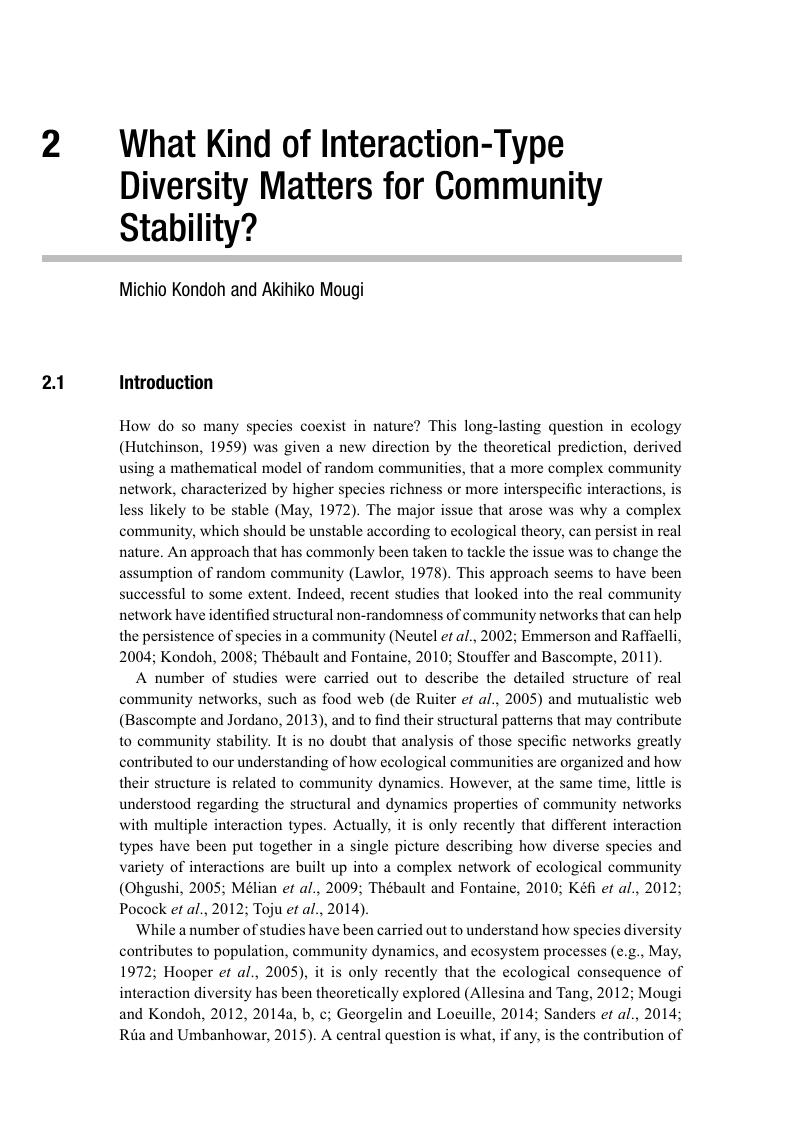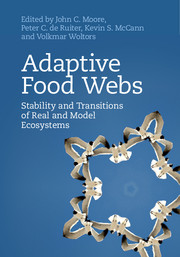Book contents
- Adaptive Food Webs
- Adaptive Food Webs
- Copyright page
- Contents
- Contributors
- Preface
- Introduction
- Part I Food Webs: Complexity and Stability
- 1 Food Webs versus Interaction Networks: Principles, Pitfalls, and Perspectives
- 2 What Kind of Interaction-Type Diversity Matters for Community Stability?
- 3 Symmetry, Asymmetry, and Beyond: The Crucial Role of Interaction Strength in the Complexity–Stability Debate
- 4 Ecologically Effective Population Sizes and Functional Extinction of Species in Ecosystems
- 5 Merging Antagonistic and Mutualistic Bipartite Webs: A First Step to Integrate Interaction Diversity into Network Approaches
- 6 Toward Multiplex Ecological Networks: Accounting for Multiple Interaction Types to Understand Community Structure and Dynamics
- 7 Unpacking Resilience in Food Webs: An Emergent Property or a Sum of the Parts?
- Part II Food Webs: From Traits to Ecosystem Functioning
- Part III Food Webs and Environmental Sustainability
- Index
- References
2 - What Kind of Interaction-Type Diversity Matters for Community Stability?
from Part I - Food Webs: Complexity and Stability
Published online by Cambridge University Press: 05 December 2017
- Adaptive Food Webs
- Adaptive Food Webs
- Copyright page
- Contents
- Contributors
- Preface
- Introduction
- Part I Food Webs: Complexity and Stability
- 1 Food Webs versus Interaction Networks: Principles, Pitfalls, and Perspectives
- 2 What Kind of Interaction-Type Diversity Matters for Community Stability?
- 3 Symmetry, Asymmetry, and Beyond: The Crucial Role of Interaction Strength in the Complexity–Stability Debate
- 4 Ecologically Effective Population Sizes and Functional Extinction of Species in Ecosystems
- 5 Merging Antagonistic and Mutualistic Bipartite Webs: A First Step to Integrate Interaction Diversity into Network Approaches
- 6 Toward Multiplex Ecological Networks: Accounting for Multiple Interaction Types to Understand Community Structure and Dynamics
- 7 Unpacking Resilience in Food Webs: An Emergent Property or a Sum of the Parts?
- Part II Food Webs: From Traits to Ecosystem Functioning
- Part III Food Webs and Environmental Sustainability
- Index
- References
Summary

- Type
- Chapter
- Information
- Adaptive Food WebsStability and Transitions of Real and Model Ecosystems, pp. 19 - 30Publisher: Cambridge University PressPrint publication year: 2017
References
- 1
- Cited by



